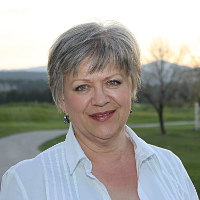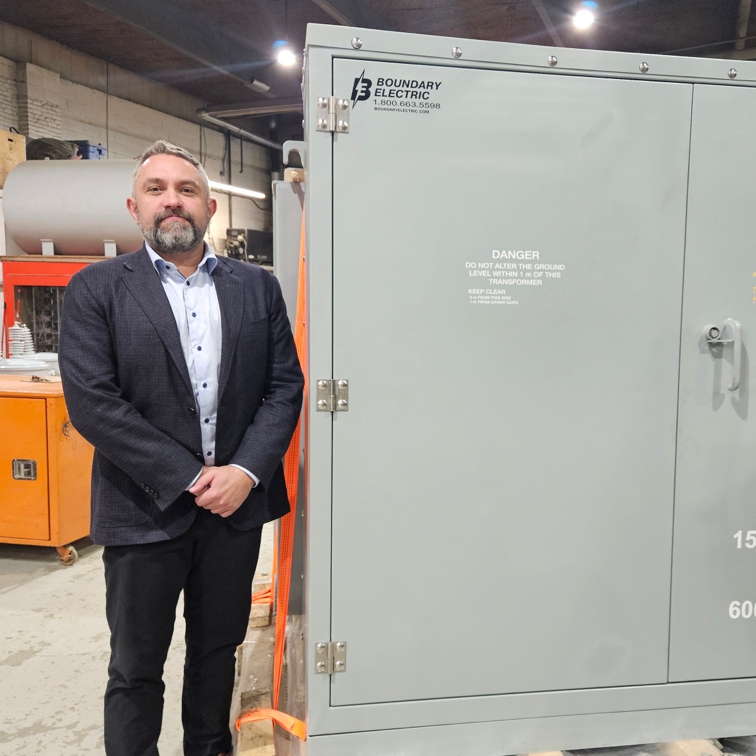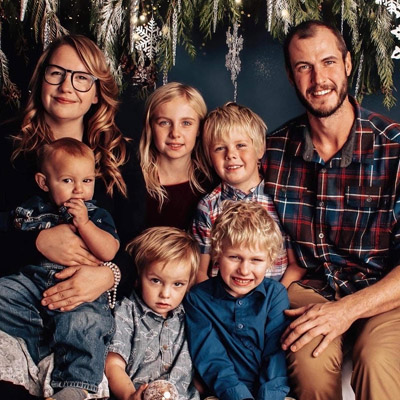A family farm
North Fork Pork & Poultry is changing with the times

Doug Zorn with his son Dylan and grandsons Declan, Brennen and Paxton are just about to head out for some chores on the farm. — Photo courtesy Doug Zorn
In 1973, newly married Doug and Pat Zorn bought a small farm near Grand Forks, B.C. They enjoyed the rural lifestyle while Doug continued to work in steel fabrication and Pat was an RN at the local hospital. Over the years while they were raising their three sons, the Zorns farmed in a small way, with a few pigs and chickens in the mix to help teach the boys about responsibility and respect for other creatures. It was a busy, balanced, happy life.
Doug retired in 2000 from his position as production manager in a steel-fabricating shop, and at that time he and Pat decided to upgrade and expand the farm, with two new farrowing pens for the pigs and a more concentrated effort in egg production.
The three Zorn boys are all grown up now, but in their own way are still involved in their parents’ farm. Dylan, the oldest, lives in Grand Forks; he works for Community Futures, is involved with the regional chamber of commerce and does the marketing for the farm. Cody, the youngest of the three, is a mechanical draftsperson; he recently moved from Maple Ridge, B.C., to Okotoks, Alberta, where his brother Shane lives. Cody built the North Fork Pork website, and Shane is following in his dad’s path as a welder and steel fabricator. For Shane, visits to the farm are usually working holidays.
Growth and balance
At 61, Doug is still a full-time farmer. Expanding the operations of the farm has presented him with some challenges and some opportunities. He applied to the B.C. Egg Marketing Board in 2011 for a small-lot licence to allow him to increase the number of egg-laying chickens he raises, from fewer than 100 to a maximum of 399. His application was successful, and Doug now faces the challenges of expanding the poultry range area, installing an egg-grading station and finding enough buyers for the increased production.
Doug also raises meat birds. Within the last year, the British Columbia Chicken Marketing Board announced an increase in the non-quota farm allowance for meat birds, meaning that the small commercial farmer is now allowed to produce up to 2,000 birds annually.
“Methods will change and improve for our birds,” Doug said. “They’ll still be out scratching in the dirt, but the area will be bigger to accommodate more birds, and the pens will be better equipped, with automatic lights and fans.”
The challenge, though, is in processing the meat—government regulations are rigid, and compliance has been expensive. Doug is optimistic that the near future will bring some relief.
“I agree and support the new meat rules and regulations,” he said. “The new mobile abattoir will make a big difference in lowering our costs. It’s being made in Lynden, Washington, and we hope to have it in use in our area by next spring.”
Philosophy versus reality
Doug combines the philosophy of the old-school farmer with the hard realism of today’s businessman. The cost of raising certified organic animals is high, and cannot be recovered from the sale of the meat—the market simply won’t bear it.
“We have four grandsons,” he said, “and they are being raised on meat from our farm. Our animals are pastured on clover, and the feed we give them is certified naturally grown. Our birds are clean and healthy and have been outside as much as possible.”
Consumers are increasingly aware of the problems that sometimes come with food produced in other countries—the lower production standards and questionable nutritional value. However, we have also become accustomed to the low cost of our groceries. This is an area where we all might have to resign ourselves to spending more for a better, safer product.






Comments